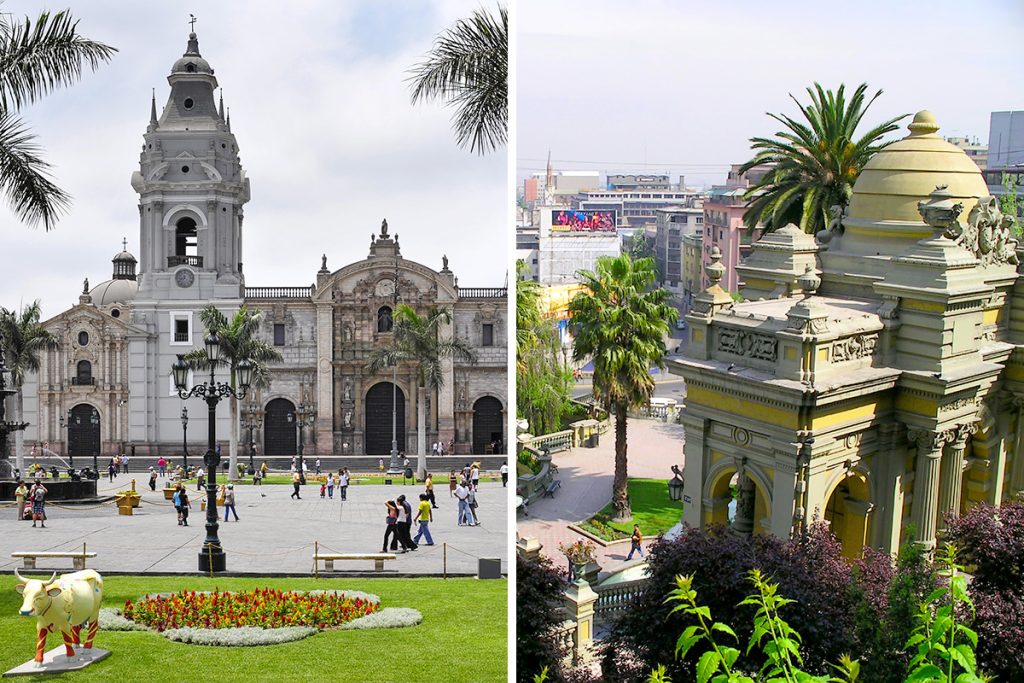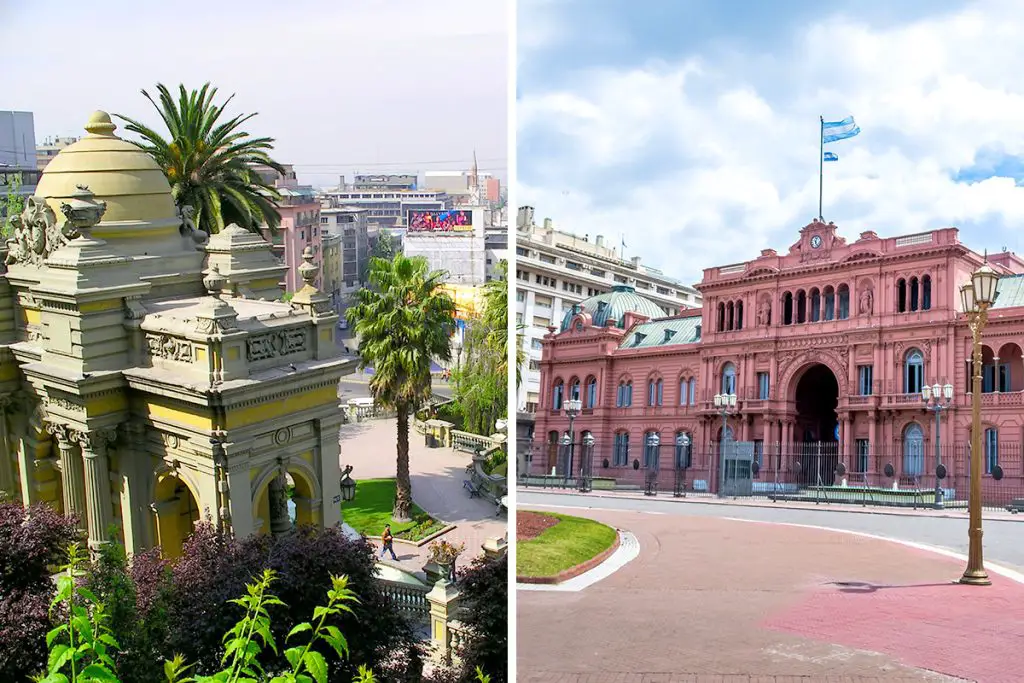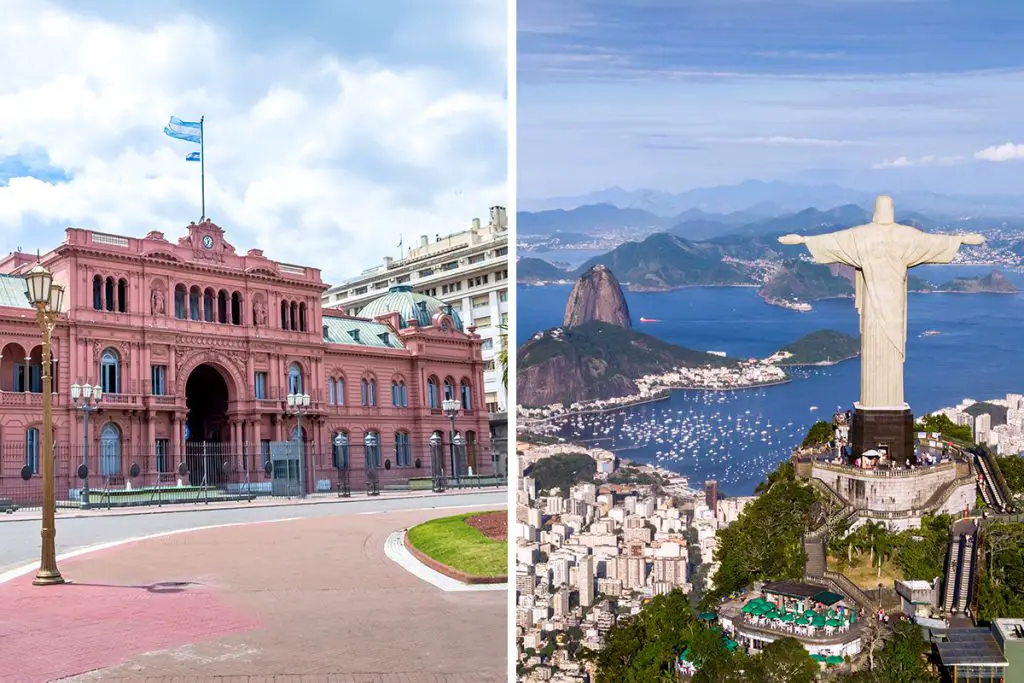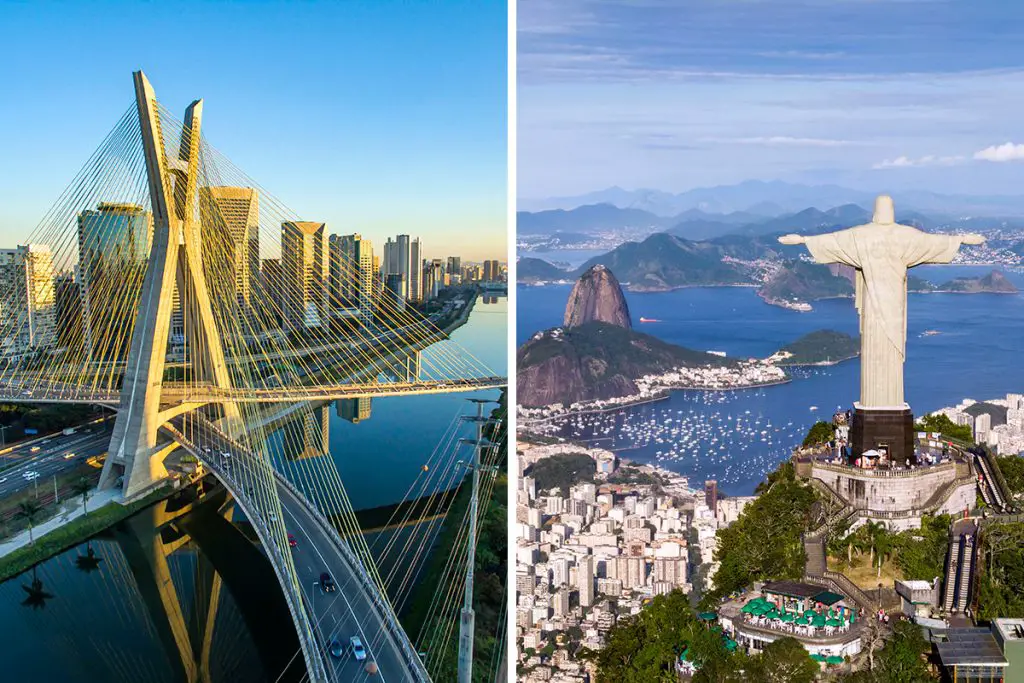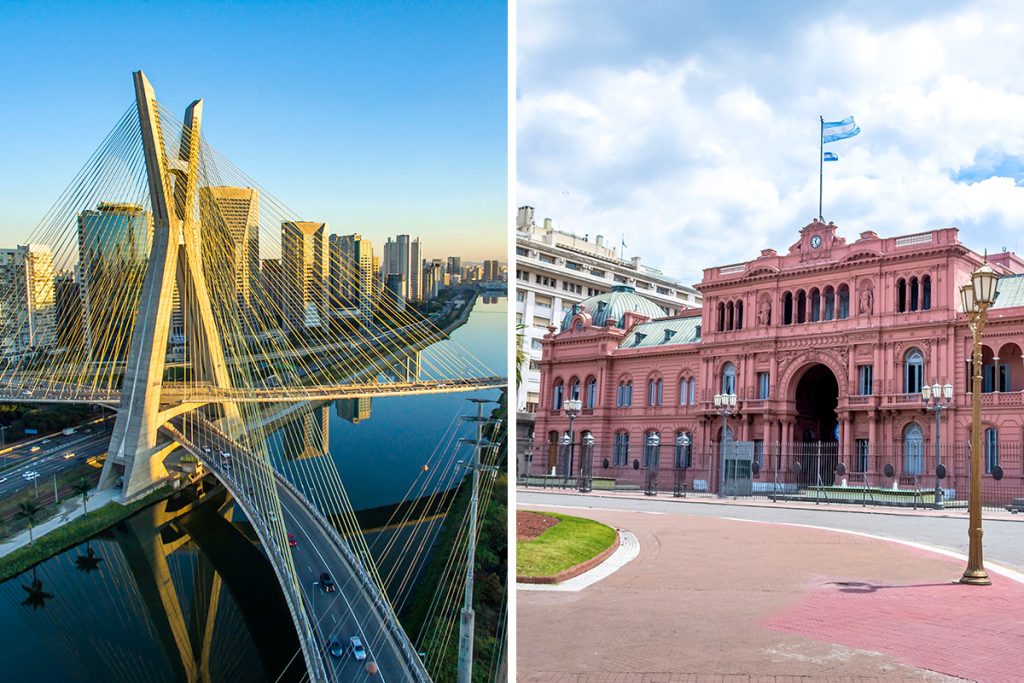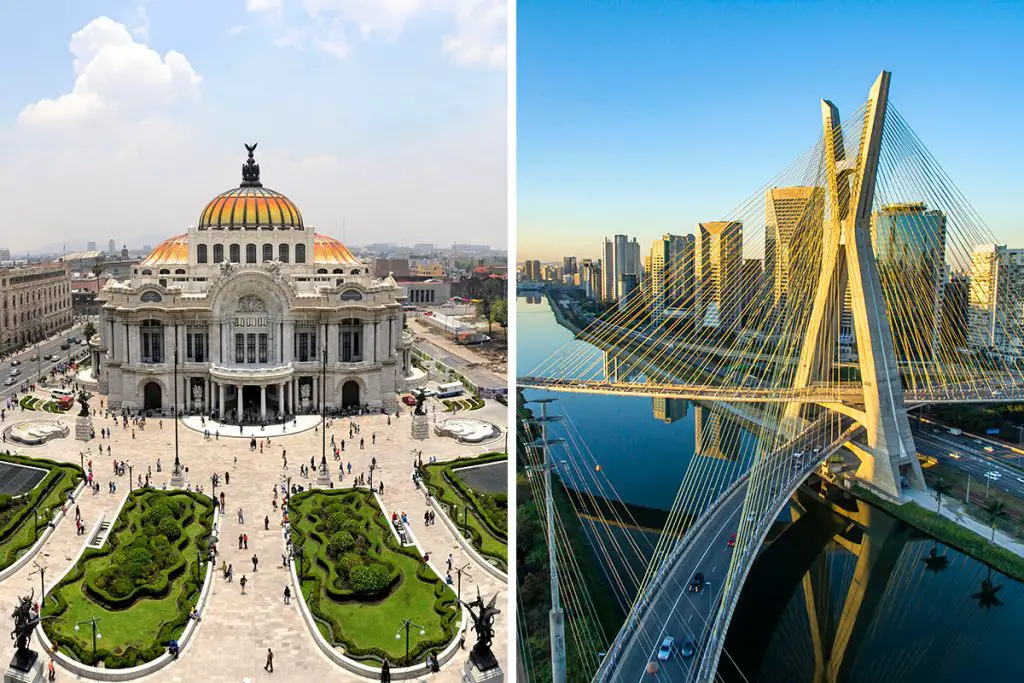As you ponder your options, this comprehensive guide will help you weigh the pros and cons of each country. Keep reading to uncover the unique offerings of Chile and Brazil, and find the perfect fit for your dream vacation. So, are you ready to make a choice? Let’s dive in!
History & Culture
Exploring the history and culture of a country can enrich your travel experience. Both Chile and Brazil offer fascinating stories and unique cultural expressions. Let’s delve into their distinct backgrounds and traditions.
Chile’s history is rooted in ancient civilizations, such as the Mapuche and the Inca Empire. Spanish colonization in the 16th century brought European influences to the mix. Today, you’ll find a blend of indigenous and European cultures in Chile’s art, architecture, and customs.
On the other hand, Brazil’s history is a melting pot of indigenous, Portuguese, and African cultures. As a former Portuguese colony, the influence of the colonizers is evident in the country’s language, religion, and architecture. Brazil’s African heritage, brought by enslaved Africans, adds a vibrant touch to its music and dance.
In Chile, you’ll notice the strong influence of the Catholic Church in daily life. Religious festivals and traditional celebrations are common, giving you a glimpse into the country’s customs and values.
Brazil’s culture is famously diverse and lively. Samba music and dance are essential parts of the Brazilian experience. The world-renowned Carnival festival showcases the country’s vibrant spirit and love for celebration.
While both countries share a rich cultural history, they differ in their expressions and traditions. Chile’s culture tends to be more reserved and influenced by its indigenous roots and European heritage. Brazil’s culture is a colorful blend of diverse influences, exuding energy and passion.
In conclusion, if you’re looking for a more tranquil cultural experience, Chile’s unique mix of indigenous and European influences might be the perfect choice. For a dynamic and diverse experience, Brazil’s lively cultural scene will leave you captivated.
Attractions & Activities
A memorable vacation often includes exciting attractions and activities. Let’s see what Chile and Brazil have to offer in terms of unforgettable experiences.
Chile is famous for its diverse natural landscapes. The Atacama Desert offers stunning stargazing opportunities, while Torres del Paine National Park boasts incredible hiking trails amidst striking mountain scenery. The city of Valparaiso, with its colorful hillside homes, is a must-visit for art enthusiasts.
Brazil, on the other hand, has a wide range of attractions, from impressive natural wonders to iconic landmarks. The Amazon Rainforest offers adventurous travelers the chance to explore its unparalleled biodiversity. Meanwhile, Rio de Janeiro’s Christ the Redeemer statue and Sugarloaf Mountain provide breathtaking views and memorable photo opportunities.
For adventure seekers, Chile’s diverse terrain provides a playground for activities like skiing, mountain biking, and white-water rafting. Nature lovers will also enjoy bird-watching and wildlife spotting in the country’s numerous national parks.
Brazil offers adrenaline-pumping activities as well, such as hang gliding in Rio de Janeiro or scuba diving in the crystal-clear waters of Fernando de Noronha. Additionally, Brazil’s Pantanal region is a paradise for wildlife enthusiasts, with abundant opportunities for spotting unique animals like jaguars and capybaras.
Chile’s cities, like Santiago and Valparaiso, offer vibrant art scenes, museums, and historical sites for those who enjoy cultural experiences. In contrast, Brazil’s cities, such as São Paulo and Salvador, provide a mix of historical landmarks, contemporary art, and pulsating music and dance scenes.
Ultimately, both countries provide a wide range of attractions and activities to suit different interests. Chile’s stunning landscapes and outdoor adventures are perfect for nature lovers and thrill-seekers, while Brazil’s iconic landmarks and diverse experiences cater to a variety of tastes.
Beaches
A beach vacation can be a dream come true. Both Chile and Brazil boast beautiful coastlines, but they offer distinct experiences. Let’s compare their beaches and help you decide which destination suits your preferences.
Chile’s coastline stretches over 2,500 miles (4,000 kilometers), offering a variety of beaches to explore. From the tranquil white sands of Bahia Inglesa to the surfers’ paradise of Pichilemu, Chile has beaches for every taste.
Brazil’s coastline is even longer, at 4,655 miles (7,491 kilometers), and features a range of stunning beaches. The famous Copacabana and Ipanema beaches in Rio de Janeiro are just the tip of the iceberg. You can also discover hidden gems like the pristine Lopes Mendes beach on Ilha Grande.
Chile’s beaches tend to be cooler and more rugged, with the chilly waters of the Pacific Ocean making swimming less inviting. However, the unique coastal landscapes and picturesque views can be rewarding for those who enjoy scenic beauty.
In contrast, Brazil’s beaches boast warmer waters and tropical surroundings, making them perfect for sunbathing, swimming, and water sports. The Atlantic Ocean’s balmy temperature provides a more comfortable experience for beachgoers.
Chile’s beach towns, like La Serena and Viña del Mar, offer a relaxed atmosphere and a range of accommodations for visitors. On the other hand, Brazil’s beach destinations, such as Florianopolis and Salvador, are known for their vibrant nightlife and lively atmosphere.
In summary, if you prefer serene and scenic beaches with a cooler climate, Chile is the ideal choice. For those seeking warm, tropical beaches with lively surroundings, Brazil is the way to go.
Eating, Drinking & Nightlife
Savoring local cuisine and experiencing the nightlife can make your trip unforgettable. Let’s compare the eating, drinking, and nightlife scenes in Chile and Brazil.
Chilean cuisine is a blend of indigenous and European flavors. Fresh seafood is a highlight, with dishes like ceviche and pastel de jaiba. Empanadas and cazuela, a hearty stew, are also popular. Wine lovers will appreciate Chile’s world-renowned vineyards and wine tours.
Brazilian cuisine is diverse and flavorful, influenced by indigenous, African, and European traditions. Popular dishes include feijoada, a meat and bean stew, and churrasco, a barbecue style of cooking. The national cocktail, caipirinha, made from sugarcane liquor, is a must-try.
Chile’s drinking scene focuses mainly on wine, with a wide variety of local options to choose from. Craft beer is also gaining popularity, with microbreweries popping up in cities like Santiago and Valparaiso.
Brazil’s drinking culture is centered around cachaça, the key ingredient in caipirinhas. Beer is also popular, with local brands like Brahma and Skol being widely available.
Chile’s nightlife is more low-key, with a focus on live music and cozy bars. Santiago and Valparaiso have a range of options, from traditional Chilean peñas to modern clubs playing electronic music.
Brazil’s nightlife is known for its energy and vibrancy. From samba clubs in Rio de Janeiro to the bustling bars and clubs of São Paulo, you’ll never be bored in Brazil after dark.
In conclusion, for a more laid-back culinary and nightlife experience with a focus on wine, Chile is the ideal destination. If you’re seeking diverse flavors, lively nightlife, and a taste of the famous caipirinha, Brazil is the perfect choice.
Shopping
Shopping can be an exciting part of any trip, allowing you to explore local markets and stores. Let’s compare the shopping experiences in Chile and Brazil to see which suits your preferences best.
In Chile, you’ll find a mix of traditional crafts, modern boutiques, and shopping malls. Santiago, the capital city, offers upscale malls like Costanera Center and Parque Arauco, where you can find both international brands and local designers.
Brazil also offers a variety of shopping options, from bustling street markets to luxury malls. São Paulo, the country’s largest city, is known for its shopping, with the popular Iguatemi and JK Iguatemi malls showcasing high-end fashion and designer labels.
For unique souvenirs and handmade items, Chilean markets like Los Dominicos in Santiago and Feria Artesanal in Valparaiso are perfect spots. You can find traditional crafts, including colorful textiles, pottery, and jewelry.
Similarly, Brazil’s markets offer a chance to buy distinctive souvenirs and local handicrafts. The Hippie Fair in Rio de Janeiro and the Mercado Modelo in Salvador are great places to find traditional Brazilian art, clothing, and jewelry.
Chile’s shopping experience is more relaxed, with a focus on quality products and a less hectic atmosphere. If you enjoy a leisurely pace, Chile might be the better choice for you.
In contrast, Brazil’s shopping scene is vibrant and bustling, with lively markets and busy malls. If you enjoy a more energetic atmosphere and are looking for a wider variety of items, Brazil is the way to go.
To summarize, Chile offers a more laid-back shopping experience with a focus on traditional crafts and modern boutiques, while Brazil’s shopping scene is lively and diverse, with bustling markets and luxury malls.
Accommodation
Choosing the right place to stay is essential for a comfortable trip. Let’s compare accommodation options in Chile and Brazil.
Chile has a range of accommodations, from budget-friendly hostels to luxury hotels. You can find charming boutique hotels in cities like Santiago and Valparaiso, as well as cozy lodges and cabins in the countryside.
Brazil also offers a variety of lodging options, catering to different budgets and preferences. From the luxurious Copacabana Palace in Rio de Janeiro to affordable pousadas (guesthouses), there’s something for everyone.
In Chile, you can expect a more intimate and personalized experience, with many accommodations focusing on creating a unique atmosphere for guests.
Brazilian accommodations often emphasize their vibrant surroundings and lively atmosphere, reflecting the country’s energetic culture.
Both Chile and Brazil have options for eco-friendly accommodations, showcasing their commitment to sustainable tourism.
In summary, Chile offers a range of accommodations with a focus on unique, intimate experiences, while Brazil provides diverse lodging options that emphasize the country’s lively atmosphere. Choose the destination that best aligns with your preferences and travel style.
Family-Friendliness & Children’s Activities
Traveling with your family requires destinations that cater to everyone’s needs. Comparing Chile and Brazil in terms of family-friendliness and children’s activities can help you make an informed decision.
Chile has many family-friendly attractions and activities. In Santiago, you can visit the interactive science museum, MIM, or take the funicular up to San Cristobal Hill for amazing views. In the countryside, explore national parks and go on nature walks together.
Brazil also offers numerous family-friendly options. Rio de Janeiro has the famous Sugarloaf Mountain cable car ride, while São Paulo boasts the entertaining São Paulo Aquarium. The Pantanal region is perfect for wildlife spotting and family eco-adventures.
Chilean cities often have public parks and playgrounds, where kids can enjoy outdoor activities. This makes it easy to plan a fun day out with the family.
Similarly, Brazilian cities are home to numerous parks, including Rio de Janeiro’s Quinta da Boa Vista and São Paulo’s Ibirapuera Park, offering plenty of space for children to play and explore.
Both Chile and Brazil have family-friendly accommodations, with options like hotels offering kids’ clubs, special menus, and babysitting services.
In conclusion, both Chile and Brazil are family-friendly destinations with a variety of activities for children. Chile offers a blend of city attractions and nature experiences, while Brazil boasts lively urban adventures and wildlife encounters.
Getting There & Getting Around
Ease of travel is an important factor when choosing a destination. Let’s compare Chile and Brazil in terms of getting there and getting around.
To reach Chile, you’ll likely fly into Santiago’s Arturo Merino Benítez International Airport (SCL). Major airlines offer direct and connecting flights from many global cities. The flight from New York takes around 10 hours and covers about 5,100 miles (8,207 kilometers).
For Brazil, most international travelers will arrive at São Paulo’s Guarulhos International Airport (GRU) or Rio de Janeiro’s Galeão International Airport (GIG). Direct flights from New York to São Paulo take around 10 hours, covering a distance of approximately 4,950 miles (7,966 kilometers).
Chile has a reliable public transportation system, with buses and metro lines available in major cities. Renting a car is another option for exploring the country at your own pace.
Brazil also offers various transportation options, including buses, metro systems, and taxis in major cities. Car rental services are available, but traffic can be challenging in large urban areas.
Both Chile and Brazil have domestic flights connecting major cities, making it easy to travel within each country.
In summary, getting to and around both Chile and Brazil is relatively straightforward, with multiple transportation options available. Choose the destination that best aligns with your travel preferences and itinerary.
Weather
Weather can make or break your vacation experience. Comparing the climates of Chile and Brazil helps you plan your trip better.
Chile has a diverse climate, ranging from the dry Atacama Desert in the north to the cold, wet regions of Patagonia in the south. In Santiago, the average temperature in summer (December to February) is around 85°F (29°C), while in winter (June to August), it drops to about 50°F (10°C).
Brazil, on the other hand, is known for its warm tropical climate. Rio de Janeiro’s average summer temperature is about 85°F (29°C), similar to Santiago. In winter, temperatures remain mild, averaging around 68°F (20°C).
In Chile’s Patagonia region, heavy rainfall and strong winds are common, making it a challenging destination for outdoor activities.
In contrast, Brazil’s Amazon rainforest experiences high humidity and rainfall throughout the year, creating a unique environment for exploring the jungle.
Both countries have distinct seasonal variations. Chile’s diverse landscapes offer a range of climates, while Brazil’s tropical weather provides warmth and sunshine in most regions year-round.
In conclusion, the weather in Chile and Brazil varies significantly. Choose Chile for a mix of climates or Brazil for a consistently warm, tropical experience.
Safety
Ensuring a safe and enjoyable trip is important. Let’s compare the safety aspects of Chile and Brazil.
Chile is considered one of the safest countries in South America. Petty crime, like pickpocketing and theft, can occur in crowded areas, but it’s generally low.
Brazil has a higher crime rate, especially in larger cities like Rio de Janeiro and São Paulo. Petty crime is more common, so it’s important to be cautious and vigilant.
In both countries, it’s advised to avoid walking alone at night, especially in unfamiliar areas, and to keep your belongings secure.
Chile is less prone to natural disasters, while Brazil may experience occasional flooding and landslides during heavy rainfall.
In terms of health concerns, both Chile and Brazil require routine vaccinations. However, Brazil also recommends yellow fever vaccinations for certain regions.
In summary, both Chile and Brazil have safety concerns to consider. Chile is generally safer, while Brazil requires more caution. Be aware of your surroundings, take necessary precautions, and enjoy your trip.
Cost
Travel expenses can be a major factor in your vacation decision. Comparing the costs of visiting Chile and Brazil can help you make the right choice.
In Chile, the cost of living is generally lower than in Brazil. A typical meal in a restaurant in Santiago might cost around 10,000 CLP ($13), while in Rio de Janeiro, it could be around 50 BRL ($10).
Accommodation prices in Chile can vary. A mid-range hotel room in Santiago might cost around 50,000 CLP ($65) per night. In Brazil, a similar hotel room in Rio de Janeiro could cost around 200 BRL ($40) per night.
When it comes to transportation, Chile’s public transport systems are generally cheaper than those in Brazil. A one-way ticket on Santiago’s metro costs around 800 CLP ($1), while a similar ticket in Rio de Janeiro costs around 5 BRL ($1).
Activities and attractions in both countries can range in price, but Chile’s national parks often charge entrance fees, while many of Brazil’s natural attractions are free to visit.
Overall, Chile tends to be slightly cheaper than Brazil for daily expenses, accommodation, and transportation. However, attraction costs can vary depending on your interests.
Which Is Better – Chile or Brazil?
In conclusion, deciding between Chile and Brazil depends on your preferences and what you value most in a vacation destination.
For history and culture, Chile offers a unique blend of indigenous and European influences, while Brazil boasts vibrant and diverse cultural experiences.
If attractions and activities are your focus, both countries provide a wide variety of options, with Chile’s diverse landscapes and Brazil’s iconic landmarks and natural wonders.
Beach lovers will find stunning coastlines in both countries, from Chile’s rugged Pacific shores to Brazil’s famous beaches, like Copacabana and Ipanema.
For food, drink, and nightlife, Brazil’s lively cities offer a more energetic atmosphere, while Chile provides a more relaxed dining experience and excellent local wines.
Shopping enthusiasts might prefer the bustling markets and malls in Brazil, while Chile offers artisan crafts and unique souvenirs.
When it comes to family-friendliness and children’s activities, both countries cater to families with a variety of attractions and experiences.
In terms of getting there and getting around, Chile’s transportation options are generally more affordable, while Brazil may require longer flights and more planning for internal travel.
For weather considerations, Brazil offers consistent warmth and tropical conditions, while Chile provides a range of climates throughout its diverse landscapes.
Finally, when considering safety and cost, Chile is generally regarded as safer and slightly more affordable than Brazil.
Ultimately, the choice between Chile and Brazil depends on your personal preferences and priorities. If you’re looking for diverse landscapes, lower costs, and a more laid-back atmosphere, Chile may be the better choice. On the other hand, if you’re seeking a warm, tropical climate with vibrant culture and nightlife, Brazil could be the ideal destination for you.


